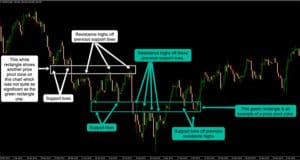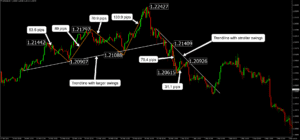We’ll explore why you should be very interested in the Vanguard Lifestrategy funds and how investing in them could be the only investment you ever need.
Firstly, we’ll look into why you should consider the LifeStrategy funds, and then we’ll review each of the four funds to find out which would best suit your needs.
Why you should be very interested in the Lifestrategy funds
Vanguard was founded in the United States in 1975 and has over 7.7 trillion dollars of global assets under management making it the largest mutual fund provider.
LifeStrategy funds were introduced to offer a different type of fund that could provide highly diversified funds with various portfolio allocations. The funds are all low-fee and offer various fixed equities allocations to bonds depending on an investor’s preference.
Additionally, Vanguard offers to automatically adjust your asset allocation to rebalance your portfolio as it was initially. This is important because if equities perform incredibly well and bonds don’t, then a portfolio that’s supposed to be 60% equities to 40% bonds can soon become 90% equities to 10% bonds.
As a result, the 90% equity portfolio would give more significant drawdowns and require much more risk tolerance. To help solve this problem, the Vanguard LifeStrategy funds offer automatic rebalancing to make managing your investments as passive as possible.
The LifeStrategy funds can be great because they offer portfolios with stocks and bonds to fit various goals, time horizons and risk profiles. If you invest in an index fund such as the S&P 500, you must tolerate the drawdown periods, which can sometimes last for many years. For example, in 2022, we saw a drawdown from the S&P 500 of over 26% and more than 32% during 2020.
Bonds typically have an inverse correlation to stocks, meaning that when the stock market index goes up, bonds usually go down, and vice versa. This is important because the LifeStrategy funds offer bonds as part of the portfolio allocation, meaning that the drawdown of portfolios with bonds plus stocks is likely to be less than that of a 100% stock-based portfolio.
Although the returns of bonds are historically less on average than equities, the risk-adjusted return of a bond plus stock portfolio is greater.

Interestingly, the U.S. bond to stocks correlation during most of the 90s was positive; however from 1997 we started to see a transition into a more negative correlation. It’s important to note that investment markets are not fixed, and the correlation between bonds and stocks changes.
Major macroeconomic factors such as inflation, interest rates, unemployment and growth affect the stock-to-bond market correlation differently. Generally, stock-to-bond correlations tend to be lower during low inflation and economic growth periods.
Despite the variance in the correlation between stocks and bonds, stock and bond portfolios often provide a higher return relative to risk over the long term.
4 types of Vanguard Lifestrategy funds explained
The four types of LifeStrategy funds are the Income fund, Conservative growth fund, Moderate growth fund, and the Growth fund.
As shown in the table, the investment time, target allocation and risk levels are different for each fund, so assessing which one best suits your needs is essential.
The only fund with a time horizon of less than five years is the LifeStrategy Income Fund, consisting of only 20% stocks, meaning portfolio returns will likely be less volatile than the others. On the other side, you have the LifeStrategy Growth Fund which is 80% stocks and would therefore require the largest time horizon to see any potential drawdown periods.
Each of the four funds contains thousands of U.S. and global equities and bonds to offer broad diversification. The funds allow you to select either to accumulate dividends to reinvest dividends to grow your account or the income option enabling you to use dividends as income.
Next, we’ll review the 4 LifeStrategy funds by looking at the top holding, the previous 10-year performance and the largest drawdown period.
LifeStrategy 20% Equity Fund
Firstly, we have the LifeStrategy 20% Equity fund, which has a risk score of 4 out of 7.
The 20% equity fund would have returned £13,060 from a lump sum investment of £10,000 from 10 years ago to July 2023.
The percentage return over the 10 years was 30.6%, meaning the yearly average was 3.06%. While 3.06% doesn’t sound like a good return, it’s also essential to consider this fund’s low risk, as shown by the fund drawdowns.
The most significant drawdown for this fund was from £15,253 in November 2021 to £12,591 in September 2022, which is 17.37%.
The fund’s largest holding is the Vanguard Global Bond Index Fund Hedged account, which makes up 18.9% of the total fund portfolio as of 2023. It has 14,325 holdings and aims to follow the Bloomberg Global Aggregate Float Adjusted and Scaled Index, which consists of international government bonds with maturities over a year.
LifeStrategy 40% Equity Fund
Next, we have the 40% equity fund with the same risk score of 4 out of 7. The fund returned £15,334 from a lump sum investment of £10,000 from 10 years ago to July 2023.
The percentage gain was 53.34%, with an average annual return of 5.33%. The largest downdown was from £17,067 in November 2021 to £14,490 in September 2022, which was 15.11%.
The FTSE Developed World ex-UK Equity Index Fund is the largest holding making up 19.4% as of 2023.
Interestingly, this holding has contributed a 10-year return of 197.84%, which is 19.84% per year. As of 2023, the fund holds 2049 stocks of large and mid-sized companies in developed markets, excluding the U.K.
LifeStrategy 60% Equity Fund
The 60% equity fund is the third fund which, despite its name, actually has 61% equities and 39% bonds.
It has the same risk score of 4 out of 7 and invests more than 90% of its assets in Vanguard passive funds that follow an index.
From a £10,000 lump sum, it returned £18,071 over 10 years to July 2023, which is 80.71%, with an average annual return of 8.07%.
The greatest drawdown was from £19,242 in December 2021 to £16,688 in September 2022, which was a 13.27% decline.
The biggest holding is the FTSE Developed World ex-UK Equity Index Fund of 19.5%, the same index as the 40% equity fund’s largest holding. Also, the holding size is very similar, with the difference being only 0.1% more than the 40% equity fund.
LifeStrategy 80% Equity Fund
Finally, we have the 80% equity fund, which has a greater risk score of 5 out of 7 compared to all the others, however it also has the largest 10-year return to balance out the extra risk. The fund returned £21,172 from £10,000, which is an increase of 111.72% and an average annual return of 11.17%.
The largest drawdown was from £17,522 in January 2020 to £15,020 in March 2020, which was 14.28%.
Even though the fund has had the largest return and the lowest drawdown compared to the other 3 funds, it’s worth realising that this fund has drawdown periods more frequently. The second largest drawdown was from £21,592 in December 2021 to £19,126 in September 2022, which is 11.43%. We also saw a fair-sized drawdown of 8.58% from August 2018 to December 2018.

The Vanguard U.S. Equity Index Fund GBP is the largest holding, making up 19.4% of the total portfolio. It’s a passive fund with 3,842 stocks that aims to closely track the S&P’s total market index. Also, it’s important to realise that the Vanguard FTSE Developed Word ex-UK Equity Index Fund has 19.3% of the portfolio, which is only 0.1% less than the largest holding.
When considering which LifeStrategy fund to invest in, factors such as your age and risk tolerance will influence your decision. Take Nick, a 25-year-old with much time ahead of him, compared to Sarah, who’s a 65-year-old needing investment returns for her retirement. Nick is likelier to have a greater risk tolerance as he has a longer period ahead to compensate for potential poor returns than Sarah.
It’s also vital to look at the fees such as the expense ratio and purchase costs for any fund before you decide to invest in it. If you enjoyed reading this make sure you check out more content from the blog.






